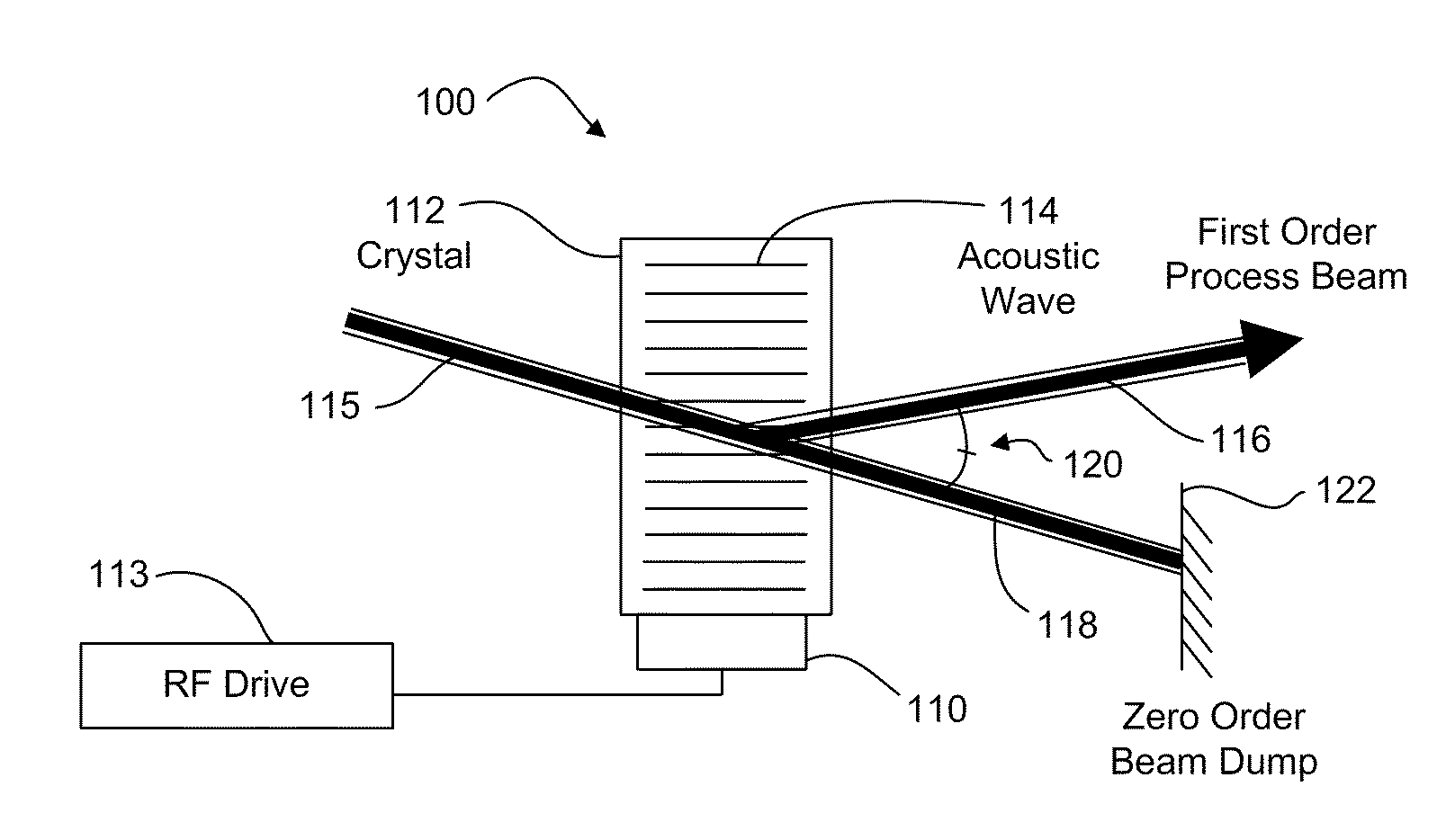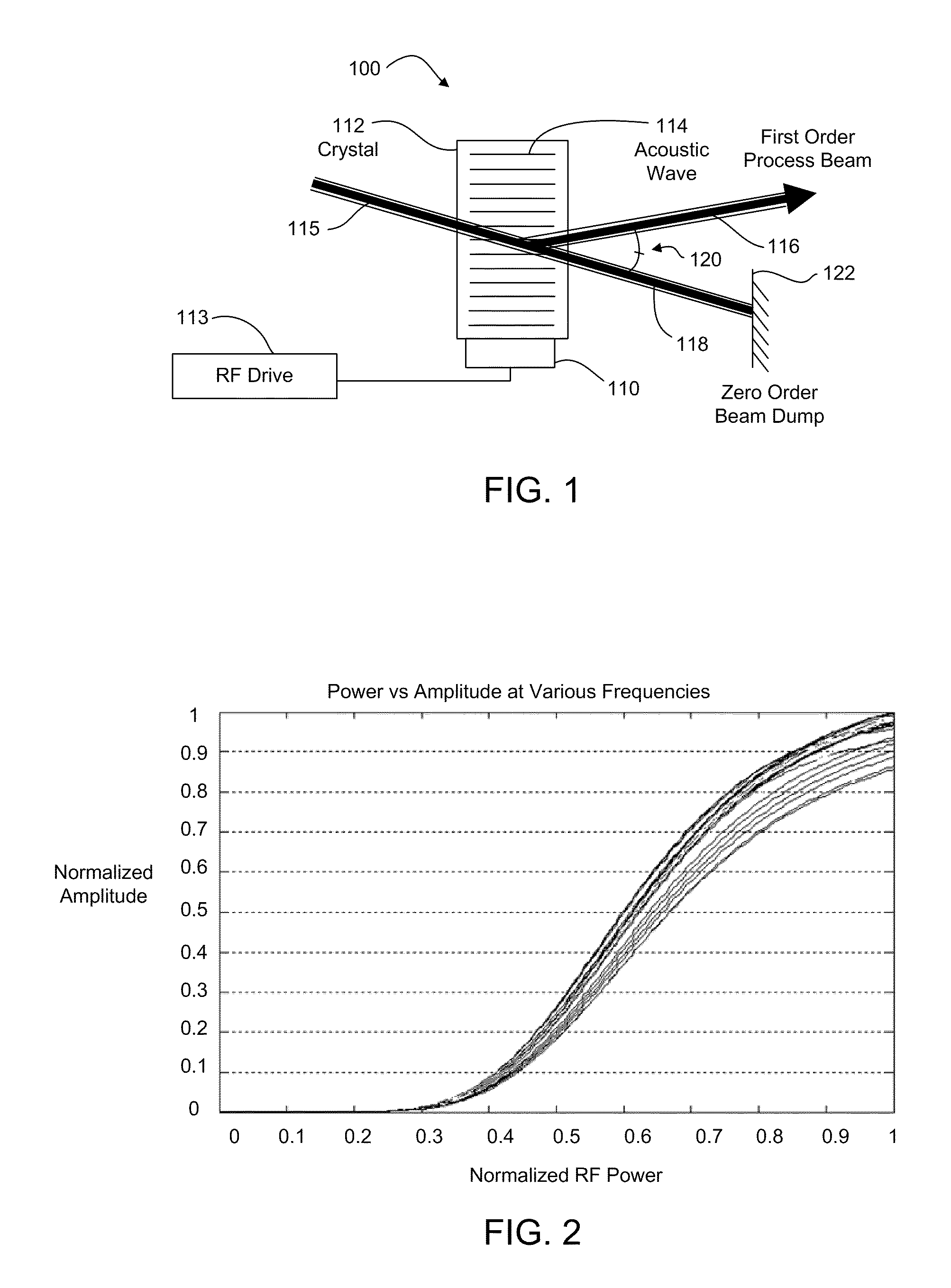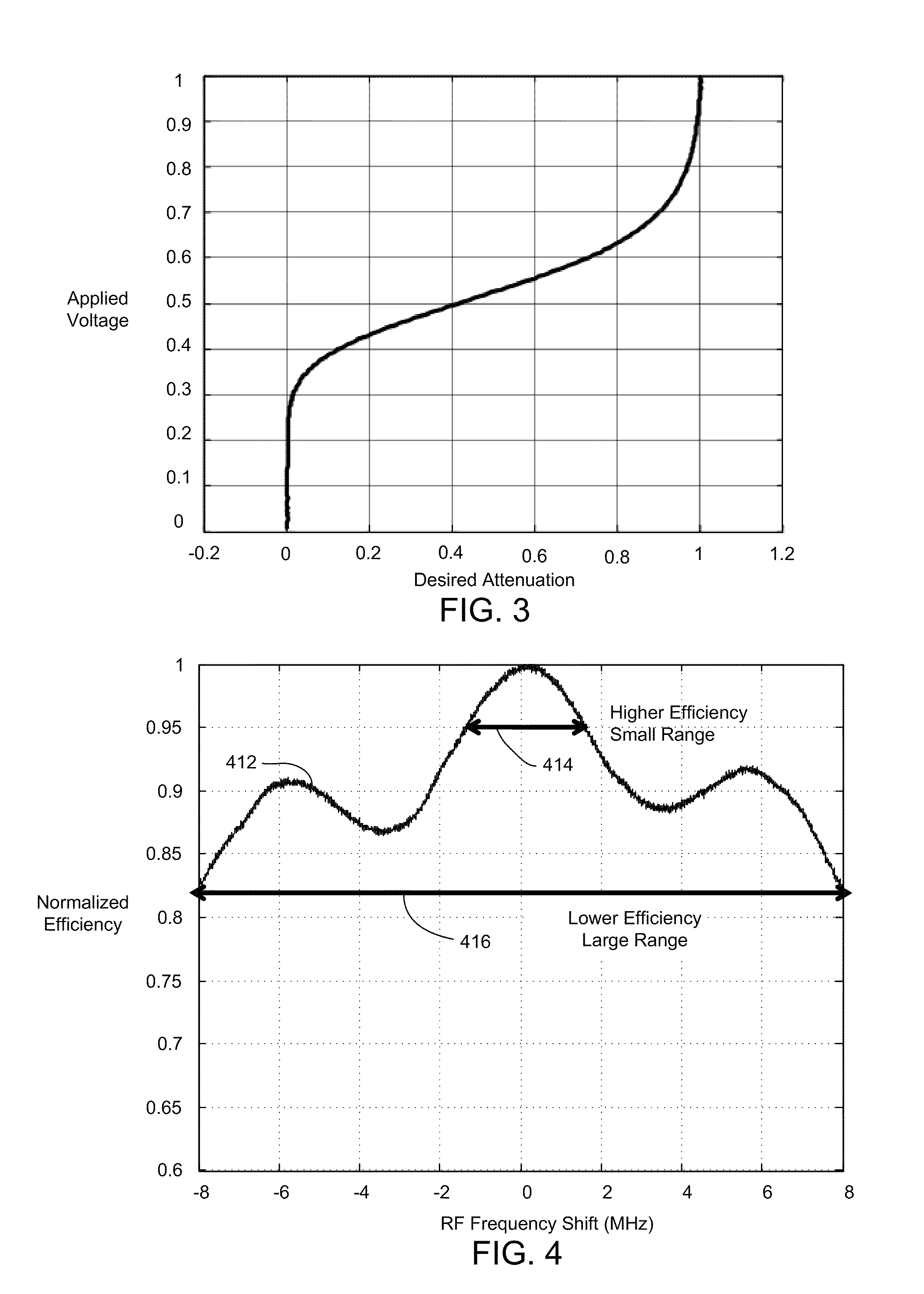Acousto-optic deflector applications in laser processing of dielectric or other materials
a dielectric or other material laser processing and acousto-optic technology, applied in the direction of manufacturing tools, metal working equipment, welding/soldering/cutting articles, etc., can solve the problem that the variation of the trajectory angle may require high beam position acceleration, the acceleration and/or velocity of acceleration and/or velocity may be difficult to achieve in traditional laser processing machines, and the optical system may have significant time delays. the effect of widening the laser beam spo
- Summary
- Abstract
- Description
- Claims
- Application Information
AI Technical Summary
Benefits of technology
Problems solved by technology
Method used
Image
Examples
Embodiment Construction
[0058]Embodiments disclosed herein provide flexible, high-speed beam positioning and conditioning that is economical and feasible. This disclosure describes the use of AODs in combination with linear positioning stages and / or galvos.
[0059]While the example embodiments disclosed herein are directed to AODs, electro-optic deflectors (EODs) may also be used. In certain embodiments, for example, EODs are suitable replacements for some or all AOD pointing (deflection) functions. EODs (when set up for angular deflection) do not typically modulate power. Thus, in certain embodiments, one or more AODs are used for power modulation and one or more EODs are used for pointing. Acousto-optic devices that perform modulation may be referred to herein as acousto-optic modulators (AOMs). Other mechanical beam steering technologies such as fast-steering mirrors (FSMs) may be substituted for the galvo beam positioning subsystem without loss of functionality.
[0060]A laser processing system, according ...
PUM
| Property | Measurement | Unit |
|---|---|---|
| speed | aaaaa | aaaaa |
| time delays | aaaaa | aaaaa |
| velocities | aaaaa | aaaaa |
Abstract
Description
Claims
Application Information
 Login to View More
Login to View More - R&D
- Intellectual Property
- Life Sciences
- Materials
- Tech Scout
- Unparalleled Data Quality
- Higher Quality Content
- 60% Fewer Hallucinations
Browse by: Latest US Patents, China's latest patents, Technical Efficacy Thesaurus, Application Domain, Technology Topic, Popular Technical Reports.
© 2025 PatSnap. All rights reserved.Legal|Privacy policy|Modern Slavery Act Transparency Statement|Sitemap|About US| Contact US: help@patsnap.com



